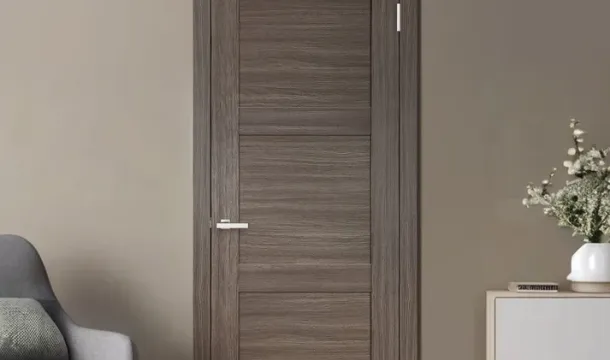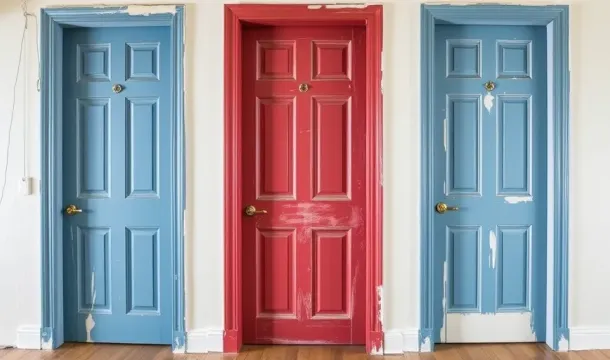Interior Doors vs. Room Dividers - Which is Best for Open Spaces?
Popular Articles
For enhancing your living environment, the selection of either partitions or solid barriers can significantly impact design and functionality. If open layouts are preferred, consider using flexible dividers that allow for adaptability while maintaining an airy feel. These elements provide versatility in how spaces are utilized without compromising on style.
On the other hand, if privacy is a priority, opting for traditional barriers may be more suitable. They create distinct areas, ensuring sound isolation and a sense of enclosure that promotes comfort within different environments. The choice ultimately hinges on your specific needs regarding aesthetics and practical use.
When evaluating options, think about how each feature aligns with your vision for the space. Assessing factors such as durability, maintenance, and visual appeal will guide you towards making the best decision that complements your lifestyle and enhances overall room dynamics.
Understanding Functionality Differences
For optimal use of your spaces, consider the specific functionalities that each option offers. Here’s a breakdown:
- Privacy: Solid panels provide superior seclusion compared to flexible partitions. If sound insulation is paramount, opt for sturdy barriers.
- Flexibility: Moveable dividers allow for easy reconfiguration of layouts, perfect for open-concept designs. They enable spontaneous changes in room arrangement without permanent alterations.
- Light and Airflow: Partitions can be designed with transparent materials, allowing natural light while maintaining separation. This enhances the brightness of enclosed areas.
- Aesthetic Appeal: Both options can enhance visual appeal. Choose dividers with artistic elements or customized finishes to match your décor style.
- Cost Consideration: Often, flexible solutions can be more budget-friendly than traditional structures, especially if installation is involved.
Your selection should align with how you envision utilizing your interior spaces, whether emphasizing openness or creating distinct zones with added privacy. Assess your design goals to make the best choice for functionality and style.
Assessing Space Requirements
Evaluate the dimensions of your areas to determine the most suitable option for separation. For smaller environments, opt for lightweight dividers that can be easily moved to create adaptable spaces without sacrificing openness. In contrast, heavier structures provide a more permanent solution, ideal for larger rooms where privacy is paramount.
Consider the ceiling height as well. Taller dividers can enhance vertical space perception while shorter options may foster a cozier atmosphere. Measure floor space carefully; ensure that any chosen element does not obstruct movement or flow within the room.
Analyze how light interacts with your selection. Transparent or semi-transparent materials allow natural illumination to permeate while maintaining some level of privacy. Conversely, solid barriers completely block light but offer maximum seclusion.
Think about functionality too–do you need quick access between spaces? If so, folding or sliding partitions might be best suited for your needs, allowing flexibility without requiring extensive structural changes.
Your choice should align with both aesthetic preferences and practical demands, ensuring an optimal balance in your living environment.
Material Options Comparison
For optimal selection, consider wood, glass, and metal. Solid wood offers durability and a classic appearance, ideal for achieving privacy while enhancing design. Look for options like oak or maple for warmth and sturdiness.
Glass options provide an open feel, allowing light to flow between areas. Frosted or textured glass can maintain some level of seclusion while visually expanding spaces. This choice is perfect for modern designs that prioritize brightness.
Metal constructions add a sleek, contemporary touch with their industrial charm. They are often used in minimalist settings and provide excellent durability against wear and tear. Steel or aluminum dividers can serve both functional and aesthetic purposes.
Composite materials combine various elements to achieve desired characteristics like strength and lightweight convenience. These are ideal when budget constraints exist but high performance is still required.
Evaluate the finish as well; painted surfaces allow customization to match your overall design scheme while stained finishes can highlight natural textures in wood. Each material has unique benefits that cater to different preferences for privacy, aesthetics, and functionality.
Popular Articles

Choosing the Perfect Interior Doors for Your Canadian Home

A Complete Guide to Choosing Interior Doors for Canadian Homes
